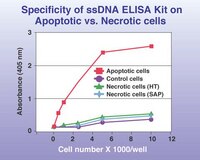A new dimeric phenylpropanoid and cytotoxic norditerpene constituents from Podocarpus nakaii.
Syh-Yuan Huang,Long-Yun Fan,Ya-Ching Shen,Chia-Ching Liao,Li-Chuan Hsu,Ya-Wen Hsu,Tian-Shan Wu,Ping-Chun Hsiao,Chien-Chang Shen,Ming-Jaw Don,Yao-Haur Kuo
Journal of Asian natural products research
11
2009
Pokaż streszczenie
A new dimeric phenylpropanoid namely podonaka A (1), along with the 13 known compounds including diterpenes (2 and 3), norditerpenes (4 and 5), benzenoids (6-10), steroids (11 and 12), chalcone (13), and megastigmane (14), was isolated from the EtOH extract of Podocarpus nakaii Hayata. The structure of 1 was elucidated on the basis of spectroscopic analysis including 1D and 2D NMR and MS techniques. Biological evaluation showed that norditerpenes, inumakilactone B (4), and podolactone E (5) have potent cytotoxic activities against Daoy, WiDr, KB, and HeLa tumor cell lines. Moreover, low dosage of 5 may induce early apoptosis in KB cells before 12 h. | 19504383
 |
Comparative characterization of cellular and molecular anti-restenotic profiles of paclitaxel and sirolimus. Implications for local drug delivery.
Rainer Wessely, Birgit Blaich, Rachida Siham Belaiba, Sabine Merl, Agnes Görlach, Adnan Kastrati, Albert Schömig
Thrombosis and haemostasis
97
1003-12
2007
Pokaż streszczenie
Pleiotropic anti-restenotic properties of drugs that are eluted from coated stents are critical for efficacy and safety. Little is known about comparative drug properties in appropriate human coronary target cell lines for the two compounds that are utilized on FDA-approved drug-eluting stent (DES) platforms, paclitaxel (PTX) and sirolimus (SRL). Target cell lines that play a pivotal role for the pathogenesis of restenosis and vascular healing include human coronary artery smooth muscle (CASMC) and endothelial cells (CAEC). PTX and SRL inhibited CASMC and CAEC proliferation and migration efficiently. However, there was a differential effect on proliferation and migration in CAEC with a more profound inhibition of both parameters by PTX, even at low dosages. Induction of cytotoxicity and apoptosis was pronounced in PTX- and very modest in SRL-treated CASMC and CAEC. PTX increased eNOS activity and nitric oxide (NO) release from CAEC. Neutrophilic leukocyte activation and transmigration, which should be avoided since it may precipitate adverse coronary events such as restenosis and stent thrombosis, was suppressed by SRL, whereas PTX tended to increase neutrophilic leucocyte activity. Therefore, although the primary drug target, inhibition of mitogen-mediated CASMC proliferation, is effectively accomplished by both drugs, auxiliary pharmacological properties that are crucial for the anti-restenotic drug effect and vascular healing are considerably different between PTX and SRL. In comparison with PTX, SRL shows minor interference with endothelial cell proliferation and migration, lower levels of cytotoxicity and apoptosis, a broader therapeutic range and distinctive immunosuppressive properties. | 17549304
 |














